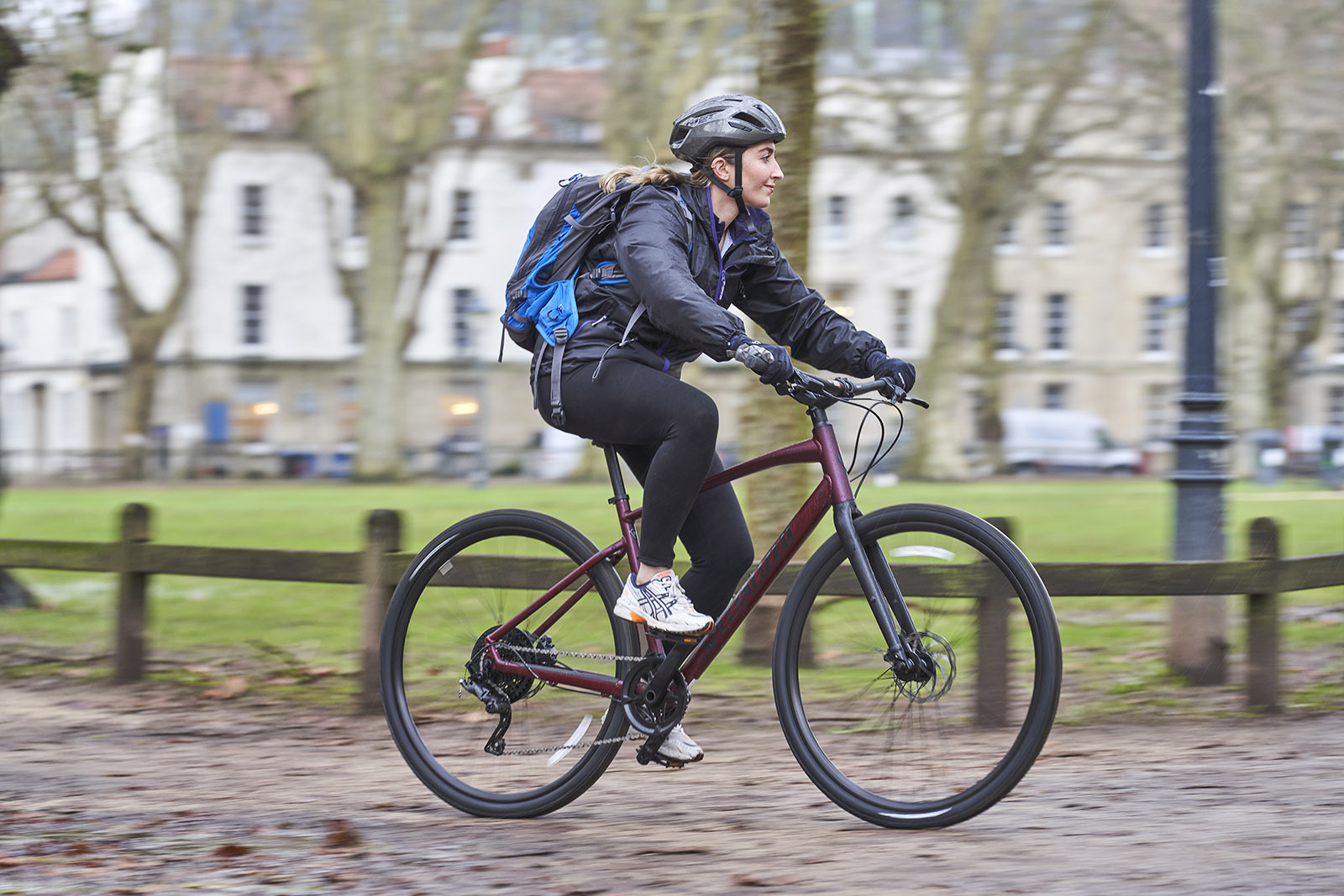New research reveals barriers to cycling include rising bike costs and people “not fitting the bill”
Nearly half of UK consumers can’t afford to buy a new bike outright, according to new research from Cycle to Work provider Cyclescheme.
The research was conducted ahead of the UK’s 11th Cycle to Work Day, which takes place today and encourages people to swap their cars for bicycles.
Despite affordability being a barrier, Cyclescheme says more people are cycling to work and would like employer support to buy a bike.
The increasing cost of bikes
Adrian Warren, chair of the Cycle to Work Alliance, says studies conducted by Cycling UK and Aviva suggest the average cost of a bike in the UK is between £835 and £900.
“If you compare that to a few years ago, the same specced bike would have been £600,” says Warren. “I think that’s reflective of how bike and component prices have significantly increased over the last two to three years.”
Warren says the research, which involved a UK-wide survey of 2,000 employed people across sectors, didn’t directly ask people why they couldn’t afford a new bike. But his hunch is that it relates to people making tricky financial decisions.
“Of the 49 per cent [who can’t afford a new bike outright], a quarter of those would say it takes at least six months to save for one. So I think that intimates there’s a lack of cash flow up front to be able to go and buy that bike.
“But talking generically, everyone in a cost-of-living crisis is having to make tough choices still,” he says.
More people cycling to work

Even if people can’t afford a new bike, more people are cycling to work. The research says the number of people commuting by bike has increased by 13 per cent since 2023.
Reasons for this increase in commuting by bike vary. One factor is that cycling can help people spend less money on fuel or public transport. Speaking to BikeRadar last year, Warren said cycling can save you £750 per year – and £1,400 if you live in London.
He says people with bikes are using them more, that improvements in cycling infrastructure have contributed to the uptick in people cycling to work, and there are changing perceptions of cycling as a viable mode of transport.
“Our research again showed that 67 per cent of people would like to start cycling more, and some of the encouragement would be if their employer provided support,” says Warren.
Many small to medium businesses don’t offer a Cycle to Work scheme, despite the assistance being launched 25 years ago by the UK government.
An inclusivity issue

Despite the 13 per cent increase, the research says there is an inclusivity issue with commuting by bike.
Reflective of how cycling struggles with diversity and how women are underrepresented, the research says the typical cycling demographic leans towards the young and male. This led to 58 per cent of respondents saying they “don’t fit the bill” and 25 per cent ranking accessibility as a top barrier to cycling to work.
Away from gender and age, Warren says he is particularly concerned by inclusivity in regards to income.
Blackhawk Network, the employee benefits company that operates Cyclescheme, says 1.6 million jobs are paid at or below the national minimum wage, which matches the UK government’s 2023 Low Pay Commission Report.
Warren says more than half of those employees are in retail and hospitality work and some sections of the NHS.
“That’s where the inclusivity becomes a real problem for me. And the reality is, that is the exact cohort of employees that the Cycle to Work benefit should be there to really help,” he says, adding that legislation and gross salary sacrifices mean these employees can’t benefit from typical Cycle to Work schemes.
To help those on the national minimum or living wage, as well as temporary workers and low-hours employees, Cyclescheme launched the IntoCyclescheme solution in February this year. The benefit acts more like a loan between employers and staff than other Cycle to Work schemes. It can be paid off over 12, 24 or 26 months.
While it doesn’t offer the same tax savings as other schemes, Warren says: “It does tackle one of the biggest barriers… which is the outlay of buying that bike in the first place.”
The biggest positive impact on active travel
Even if it will still take lots of work to remove the barriers to cycling, Warren says after 25 years the Cycle to Work scheme is the employee benefit that has the biggest positive impact on active travel behaviour.
“Not only does it encourage people to change their behaviour, but all of the benefits that come with that positively impact the government policies, and our environment, but also takes relief on the NHS from some of the obesity, inactivity, mental health situations that they have to cope with.”